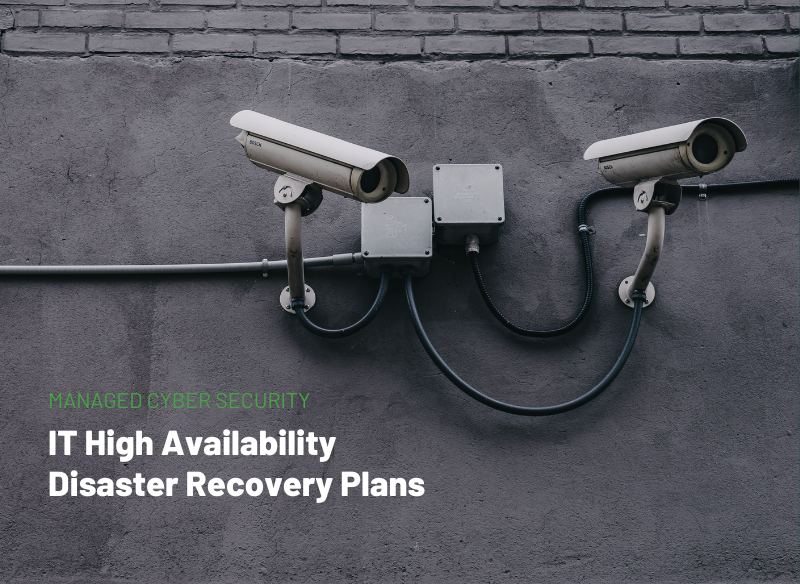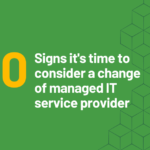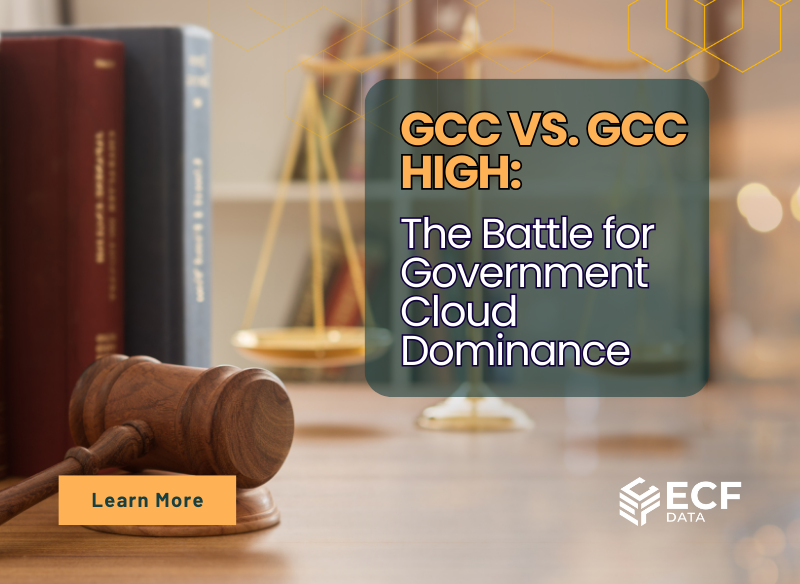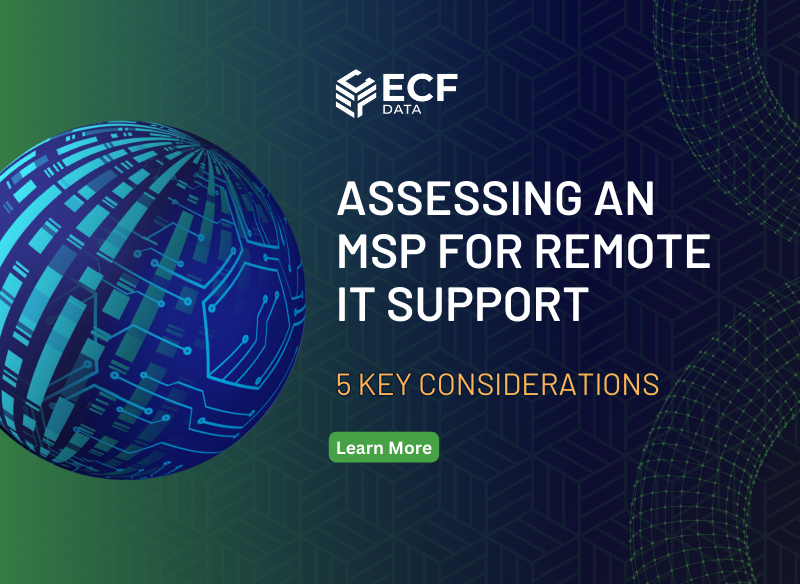-
By: Janina Criador
- Cyber Security, IT Management
- April 13, 2023
- Comments 0
IT High Availability Disaster Recovery Plans | Managed Cyber Security
Warren Buffet, a multibillionaire businessman and philanthropist, claims that cybercrime is the world’s worst problem and that cyberattacks pose a more significant threat to humanity than nuclear weapons.
A cyberattack can happen to any organization, and they are becoming more dangerous and sophisticated. Successful ransomware attacks have the potential to destroy data permanently and impair a company’s capacity to conduct business for days or even weeks. In addition to the costs of recovery, a successful data breach entails the dangers of reputational harm, legal repercussions, and the loss of a competitive edge.
Is your organization ready?
What is a Cybersecurity Disaster Recovery Plan?
Cybersecurity Disaster Recovery Plan provides your organization directions in managing a cybersecurity incident with minimal losses. Your recovery plan will explain the steps your organization has to take to stop losses, eliminate the threat, and move on without risking the future of the firm.
What are the Goals of Cybersecurity Disaster Recovery Plan?
- Ensure Business Continuity
Before anything else, establishing a line of business continuity should come first. In other words, your first goal should be ensuring that the company can continue to run both during and just after the threat. In this manner, you can keep making money. Additionally, as you repair the damage left by the catastrophe, you’ll want to keep your reputation intact.
- Reduce Losses and Impacts
Cybersecurity events can cost millions of dollars, and if they are not managed, they can force businesses out of business. Plans for recovering from disasters should include methods for limiting costs and losses through continued operation, the protection of vital assets, and incident containment.
- Communicate with Stakeholders
Communication is necessary during cybersecurity incidents with both internal and external stakeholders, including the incident response team, leadership, regulators, and customers. Setting up clear channels of communication is crucial for efficient incident management and fulfilling deadlines set forth by law and regulations.
- Safeguard Sensitive Data
Sensitive customer or company data breaches have the potential to significantly increase the cost and effect of security incidents. To protect the company and its clients, it is crucial to guarantee data security throughout the disaster.
- Improve and Review
Team members should keep track of their activities as well as details about the occurrence and how it was handled throughout the disaster recovery process. These records and metrics can be utilized in the past to streamline recovery processes and enhance incident prevention.
- Revive Normal Operations
Any catastrophe recovery plan’s goal is a restoration to normal operations. Plans for cybersecurity catastrophe recovery should outline how to go from business as usual to full recovery.
How to Produce a Cybersecurity Disaster Recovery Plan
In the event of a cybersecurity attack, a disaster recovery strategy should focus on ensuring company continuity and returning to normal operations.
- A clear owner
- Involvement from members throughout your organization
- Clear paths for communication
- Simple methods for execution
- A comprehensive, multi-layered approach
- Regular practice and continuous updates
- Select the Proper Authorities
It is not ideal for business continuity to discover that, during a security crisis, the plan doesn’t exist, is outdated, or is lost. A person or a team who will oversee the recovery process and be reachable in an emergency should be assigned.
Many companies decide to outsource part of these duties. Instead, they work with an IT support company to assess their possible risks and put together a recovery strategy.
- Enumerate Personnel Roles
Now that you’ve delegated the right people, work delegation should come next. It ensures proper and systematic handling of the numerous repercussions a crisis brings along with it when each person has a function allocated.
- Take Inventory
After completing the task delegation, you must assess three items by working on your hardware and software inventory:
- Lost Resources: Data, resources, and network nodes that are corrupted, compromised, or taken over must be known to you.
- Available Resources: They are necessary for catastrophe management, containment, and a graceful system restart.
- Hijacked Resources: You must take the required steps, such as consulting a reputable security solutions provider, waiting for the ransomware culprit, etc., once you have determined that some of your resources (software and hardware) have been compromised.
You may obtain insight into the situation and communicate data-backed facts to all stakeholders, including clients, customers, and workers, with the help of a thorough study of your hardware and software inventory.
- Establish a Response Procedure Outline
No cybersecurity disaster recovery plan is complete without a thorough description of the numerous recovery procedures that should be followed in every circumstance. So, you must consider all the potential problems when creating your cybersecurity disaster recovery plan because there isn’t a lot of historical data to draw from. Thus, it is a time-consuming task that necessitates a complete examination of your network, operations, business model, security posture, and other factors. As a result, we advise developing an extraordinarily accurate and flawless set of reaction methods by consulting some reputable security solution providers or cybersecurity consultants, like ECF Data.
- Develop a Crisis Communication Plan
It’s critical to have a crisis communication plan in place that you can use to inform and prepare all parties involved in the business. Alternatively, they can become fearful or intimidated by your lack of action and quit doing business with you altogether.
- Practice and Test
Only if you consider the new software, your organization has purchased along the road, and accompanying updates does it make sense to design a disaster recovery plan. To ensure that the backup software and data replication processes are ready for future IT changes, they must also be evaluated frequently.
Also, you must ensure that your recovery plan complies with your human resources’ logistical practices. In the case of a cyber crisis, it must be implemented in accordance with your overall management strategy. The simulation exercises that are part of your cyber crisis management strategy can include this need.
Making a Cybersecurity Disaster Recovery Strategy That Works
While it is hard to completely exclude hazards or security disasters from your life, developing trustworthy and effective measures to deal with them is a proven way to come out on top. So, one critical error you may do is to create a disaster recovery plan and then completely forget about it until a calamity strikes. Always keep in mind that your disaster recovery plans need to be regularly updated, revised, and improved. This is due to the fact that hackers and technology are both developing quickly! Hence, having quick thinking and being prepared are two essential components of a fool proof disaster recovery strategy. Ultimately, in order to maintain a solid security posture and guarantee recovery with minimal losses every time, you need the correct expertise, such as that of App Knox.









